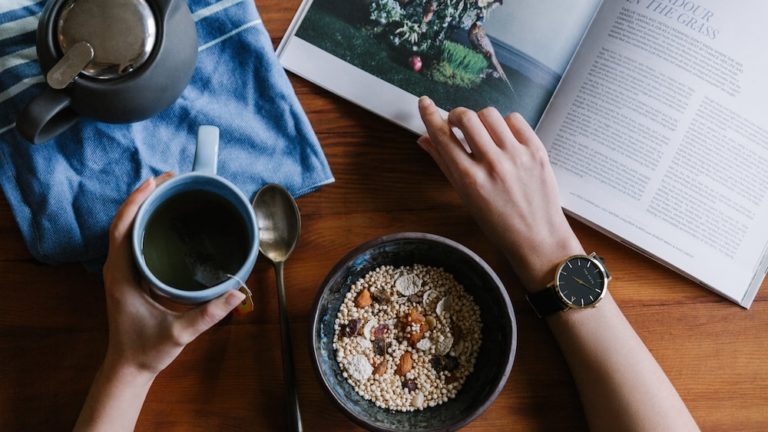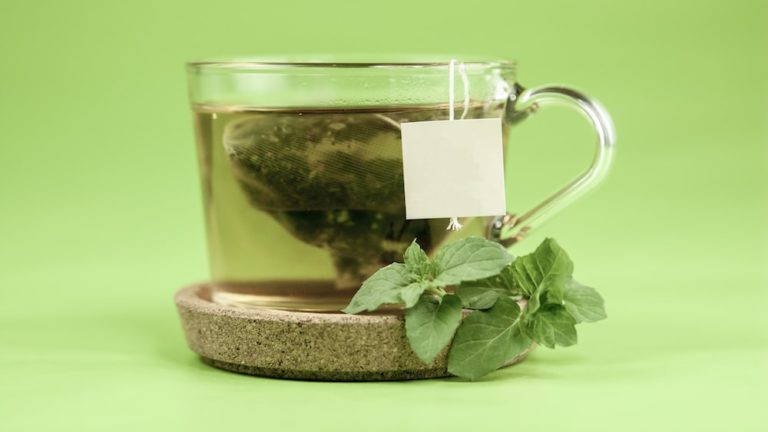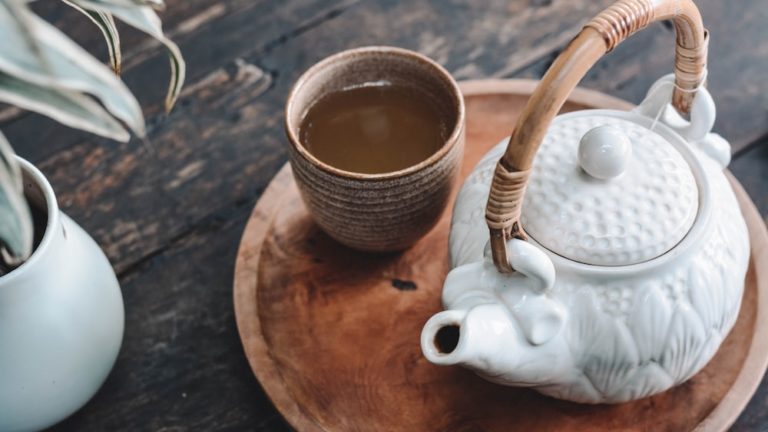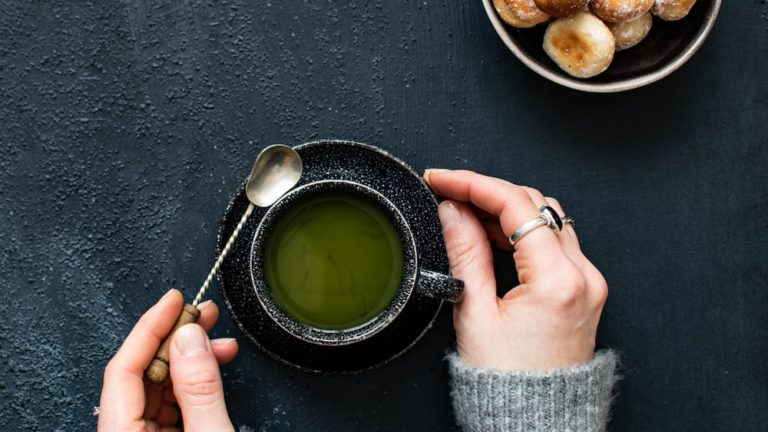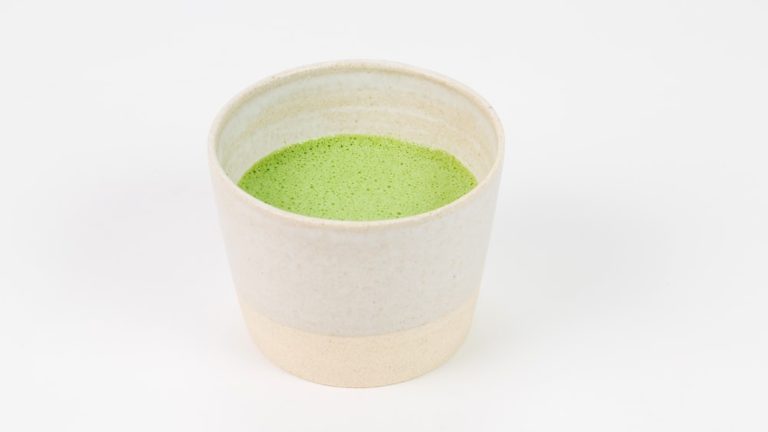White Tea Vs Matcha: Which Tea Reigns Supreme For Health?

White Tea Vs Matcha: Which Tea Reigns Supreme For Health?
Hello, all my tea-time enthusiasts! Ever find yourself standing in the tea aisle, scratching your head over the plethora of choices? Well, today, let’s make your conundrum a tad more manageable! We’re diving neck-deep into the great debate: white tea vs matcha–which tea sashays off the catwalk of health and claims the crown? To the inexperienced eye, this might seem like comparing apples to oranges, but we’re not here for a fruit salad, are we?
We’re here to stage a brew-tiful showdown between these two distinct yet beloved characters in our global tea narrative. Rest assured, this won’t be a duel to the death, but an enlightening tête-à-tête unraveling their origins, tasting notes, health benefits, and ultimately, the eternal question–should it be white tea or matcha gracing your teacup each morning?
Did I hear a collective cheer? Oh, you’re ready to join me on this brew-venture, aren’t you? Let’s answer all your burning questions and crown the health champion of the steamy world of tea, white tea or matcha!
Understanding White Tea and Matcha
Before dueling in a tea infused face-off, let’s introduce our contenders. On the one hand, we have the elegant lady of the tea world, the dainty white tea, with her delicate taste profile. On the other, in a neon green robe, stands matcha, a fantastic powder hailing from the family of green tea, renowned for its unique preparation and bold flavors. So who are these two really and how did they become the tea celebs they are today? Let this thoughtful tête-à-tête begin!
What is White Tea?
Let’s clear the floor for our first contender! White tea, in my humble opinion, is the shy ingenue of the tea world. It’s the least processed of all teas, its essence preserved in its most natural form. Imagine witnessing the serene spectacle of tea fields bathed in dawn light, with the dew-kissed leaves, especially plucked, waiting ever so patiently for their moment in the sun… quite literally!
But why the name, you ask? It’s christened ‘white tea’ due to the fine silvery-white hairs on the unopened buds of the tea plant, giving them a whitish appearance. White tea is truly a visual and sensory wonder, a mild yet intricate play of flavors that are sweeter and delicate compared to its more robust cousins.

White tea is the least processed of all teas, preserving its essence in its most natural form, with a mild and delicate flavor.
What is Matcha?
From the tranquility of white tea, we march towards the vibrant world of matcha. Pay attention, folks, because we’re switching gears here. No longer are we befriending leaves, matcha comes in an intriguing powdered form. But it’s not just any green tea that’s been squashed into powder; my dear sirs and madams, it’s so much more!
Made from shade-grown tea leaves, matcha is lauded for its vibrant green color and its unique, rich taste. Imagine the emerald-hued fields of Japan, where leaves flurry in anticipation, their chlorophyll content soaring as they are shaded from the sun’s direct rays. This gives matcha its unique flavor profile and a significant health boost. Buckle up, folks, the matcha ride is quite the rollercoaster!
Origins and Processing of White Tea and Matcha
Where do our two contenders hail from, you might wonder? Oh, but they come with rich histories and savory tales tucked under their leaves! So let’s unfurl these tales and delve into the origins and processing of white tea and matcha.
Origin of White Tea
Our gentle lady, white tea, has her roots in China. Not just anywhere, my dear friends, but in the Fujian province, a region renowned in the world of tea. Picture the cool, fog-drenched hills of Fuding and Zhenghe, where the perfect terroir and climate come together to give birth to this delicate brew.
White tea’s history is as delicate as its flavor, dating back to the Tang Dynasty where it was a luxurious indulgence of the royalty. A whisper of luxury, tinged with sweet history, that’s our beloved white tea for you!
Processing of White Tea
White tea’s subtle charm lies in its equally delicate processing. The leaves are hand-plucked and quickly dried to minimize oxidation, locked in a delicate limbo between their natural form and a hint of transformation. The result is a brew that’s fabric-softener gentle with a whisper-thin body.
It’s like enjoying the virginity of the tea leaf itself. Peering through a foggy morning, the faint sunlight whispering through the dew, a cup of white tea is a charming dance of subtlety and raw, untamed flavors.
Origin of Matcha
Striding to the other corner, it’s matcha’s time to shine! While green tea is universal, matcha boasts of a uniquely Japanese origin. Ever heard of a tea so loved, so revered that it got its own ceremony? Yes, friends, dive into the vibrant, zen-infused culture of Japan, where matcha, the heart of the traditional tea ceremony, took root.
Matcha’s tale begins in the verdant tea-gardens of Uji, Kagoshima, and Nishio, places steeped in profound Japanese tea lore. It was carried by Zen Buddhist monks’ wisdom into the tranquil world of meditation and, subsequently, into the deathlessly beautiful art of the tea ceremony. Matcha is not merely a tea; it’s a meditative melody of traditions, culture, and, of course, fantastic health benefits.
Matcha is more than just a tea, it is a meditative melody of traditions, culture, and fantastic health benefits.
Processing of Matcha
When it comes to processing, matcha stands tall and proud, nothing like your regular green tea. Its leaves are grown in shade to amplify their flavor and nutritional profiles. Following this, they’re meticulously destemmed, deveined, and grounded into a fine, jade-hued powder.
Gone are the days of steeping; with matcha, you’re consuming the whole leaf, resulting in a powerhouse of health benefits and an engaging tea-time practice. How’s that for an antioxidant-packed, hearty gulp of tradition.
Comparing the Taste and Texture of White Tea and Matcha
In the grand tea face-off, the contrast between white tea and matcha is as different as, let’s say, a cat’s purr and a bird’s song – they both have their unique allure.
Flavor Profile of White Tea
White tea is like that quiet companion who softly whispers secrets in your ear. The flavor profile here is subtle but layered, comparable to a serene lake that hides away pearls. It carries a delightful combination of sweet, floral, and often fruity notes. Sometimes, you might encounter an underlying creaminess, that’ll remind you not of a blustering party, but more of a calm retirement home where life unfolds at its own pace. White tea’s charm, after all, resides in its softness.
Yet, in depth, it’s as complex and rich as it gets, with the types of white tea – like Silver Needle, White Peony, Long Life Eyebrow – offering a whole array of differing nuance. I dare you to try them all! You might just find some notes winking up at you that you never expected to find in tea.
Flavor Profile of Matcha
In stark contrast, matcha is like your boisterous friend who churns out a feel-good story at every gathering; its flavor profile is a vibrant party in your mouth. Just one sip will tell you matcha isn’t about subtleties. Instead, it confronts you with its unique strong, vegetal taste upfront – imagine a grassy variant of your favorite superhero – stronger, bolder, greener! The consistency of matcha is a textural treat too, as the distinctive frothiness comes from whisking the powdered goodness vigorously, exactly as the samurai did centuries ago.
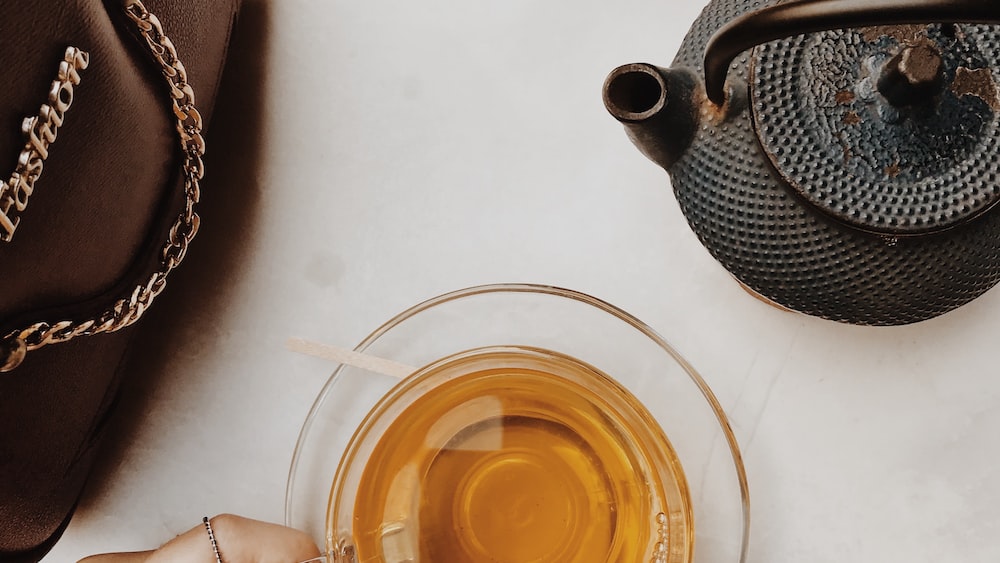
Its infamous umami flavor – a pleasant, savory taste that will wake up your tastebuds like a good ol’ alarm clock – is a characteristic that sings “Here’s Matcha!” loud and clear. The beautiful complexity of the sweet notes is another highlight, making every sip an exclusive experience.
Matcha is like your boisterous friend, confronting you with its unique strong, vegetal taste upfront, its infamous umami flavor, and the beautiful complexity of sweet notes, making every sip an exclusive experience.
Health Benefits of White Tea and Matcha
When it comes to health championships, the white tea vs matcha argument appears to have taken quite a serious turn, nothing short of an Olympic rivalry.
Health Benefits of White Tea
White tea reminds me a little of that fairytale character we usually underestimate until the end. The quiet maiden who turns out to be the powerful sorceress that saves the day. It’s low in caffeine, has anti-aging properties, and is loaded with antioxidants, earning it a golden ticket to the list of ‘elixirs to a healthy life’.
Here’s a well-noted fact- white tea is rich in phenolic compounds, which work as a veritable fountain of youth for your skin, enhancing complexion and reducing wrinkles. An exciting study by Kingston University of London found that white tea could effectively prevent enzyme activities notorious for degrading skin elastin and collagen. They say, “age is just a number”, and it seems white tea is determined to prove this right!
Health Benefits of Matcha
Though a little louder in the room, Matcha too demands your attention with its health benefits. Think of matcha as the overachieving sibling – striving high and pushing barriers. It’s like the bold, literary metaphor for health; matcha proudly holds the title of THE fat-burning champion. Research from the University of Geneva found that consuming matcha can increase your fat-burning rate by nearly 25%. I suppose even the calories run away when they see matcha coming!
That’s not all; matcha is packed with the super antioxidant EGCg (epigallocatechin gallate) known for its cancer-fighting properties. An inspiring study in the journal Molecular Nutrition and Food Research showed that EGCg could potentially inhibit cancer cell growth. Maybe matcha is the real superhero here, after all.
Caffeine Content in White Tea and Matcha
Here comes the caffeine face-off! The question capturing tea-lovers’ gossip like an eager paparazzo: “Who sports more caffeine, white tea or matcha?”
Caffeine in White Tea
White tea is known as the featherweight champ in this contest, carrying the least caffeine among all tea types. Think of it as the art of zen, creating a sense of tranquility with every sip. It offers a ‘middle path’ of sorts, a gentle nod towards caffeine that wouldn’t make your heart hammer like a thriller drum sequence.
The caffeine content varies depending on the leaf’s age and the steeping time but generally, a cup of white tea contains about 15-30 mg of caffeine. Quite a modest figure in the caffeine community, don’t you think?
White tea is the gentle champion of low caffeine content, promoting tranquility and offering a modest figure of 15-30 mg per cup.
Caffeine in Matcha
Matcha, on the other hand, rolls up its sleeves and heads straight for a caffeine-jab. Think of matcha as the heavyweight, the caffeine champ, with a caffeine content roughly thrice that of brewed coffee. Each serving clocks in at about 70 mg per cup, registering quite an uppercut on your caffeine scale!
Here’s another quirk that makes matcha fascinating: thanks to the wonder ingredient L-Theanine, the caffeine in matcha is released slowly over 6-8 hours. This prevents the caffeine spikes and crashes often associated with coffee, and ensures a sustained energy boost, sharp focus, and improved mental clarity.
This ‘slow-release mechanism’ also makes matcha an excellent choice for those in need of a long study or work session. A cup of matcha might just be your best bet against that snooze-inducing office meeting or the never-ending pile of paperwork. So, who’s ready for round one against Matcha’s caffeine punch?
Pricing and Availability of White Tea and Matcha
- So, you’ve made your decision, either white tea or matcha has caught your fancy not just due to their health benefits but also because of the pure, pleasant tastes these teas bring to your tea cup. But wait – now comes another question: How easy is it to get your hands on these teas, and what kind of a dent are they going to make in your wallet? Let’s dive into these steep subjects!
Availability and Price of White Tea
- White tea, my dear friends, is usually more readily available compared to its greener cousin, Matcha. You could find it in numerous forms – loose leaves, sachets, or as a part of a mixed blend – in local stores or buying online isn’t a hassle either.
- Teeny weeny issue might be your wallet having a minor heart attack. The difference in price primarily roots from the tea processing as white tea undergoes minimal processing. Think of it like spotting a rhino in the wild – thrilling, but a rare sighting. This pushes up the pricing scale, especially if you’re after the higher-grade variants.
Availability and Price of Matcha
- Now, over to the emerald contender, Matcha. Ignite your Sherlock instincts because finding genuine, high-quality matcha can feel like a quest at the beginning. However, quality matcha is easily accessible in health food stores, specialty tea shops or even a few clicks away online.
- Matcha powder, in terms of pricing, may have you clutching your pearls. This is due to an incredibly labor-intensive and meticulous production process that it follows, from the shade-growth process to the precision grinding. But believe me, the taste and health benefits of matcha will make you feel like you’ve hit a mini jackpot with every sip.
- If Matcha had a motto, it’d definitely be “quality over quantity”. So, remember to look beyond the price tag and choose quality matcha even if it sets you back a few more bucks. After all, treating yourself like a royal once in a while wouldn’t hurt, would it?
Finding high-quality matcha can be a quest, but the taste and health benefits make it worth choosing quality over quantity, even if it costs a bit more.
Frequently Asked Questions
1. Which tea is healthier, white tea or matcha?
- When it comes to determining which tea is healthier between white tea and matcha, it’s pretty much like asking “Which super power is better, invisibility or flight?”. Both teas have their own health benefits. Matcha is rich in antioxidants and aids in boosting metabolism, while white tea is known for its anti-aging properties and supports heart health. It’s like a tea version of Marvel vs DC, both being super (hero) in their own way.
2. Does white tea or matcha have more caffeine?
- If we consider caffeine, matcha does run ahead on the track. Matcha generally contains more caffeine compared to white tea. It’s like a near-midnight espresso shot for your tea-loving soul!
3. Which tea is more expensive, white tea or matcha?
- In the world of tea economics, it’s generally seen that matcha tends to be more expensive than white tea. However, remember – quality over quantity!
4. Can I substitute white tea for matcha in recipes?
- In regards to substituting white tea for matcha in recipes, it’s a bit like imagining Walter White from Breaking Bad turning into Sherlock Holmes. Each has their own unique qualities and impacts. So, substitution might not yield the same results in terms of color, flavor and texture.
Conclusion
- And there we have it folks, a toe-to-toe bout between the treasures of the tea world – white tea vs matcha. Think of this as an exciting journey you’ve embarked on, down the meandering paths of tea variants, revolutionary tea processing methods, and a splash of fact-based comparative platter involving your new favorite brews – white tea and matcha.
- In the grand scheme of things, it all trickles down to personal preference. Decide which aspects matter to you the most – Is it taste? Is it health benefits? Or perhaps the caffeine content?
- At the end of the day, there’s nothing quite like hugging a warm cup of your favorite tea, so why not have the best of both worlds? Thank you for joining me on this fascinating teacup ride, and until next time, keep sipping and exploring the wondrous world of tea. Take care and happy tea time, folks. This is Zoe signing off.’]”)

